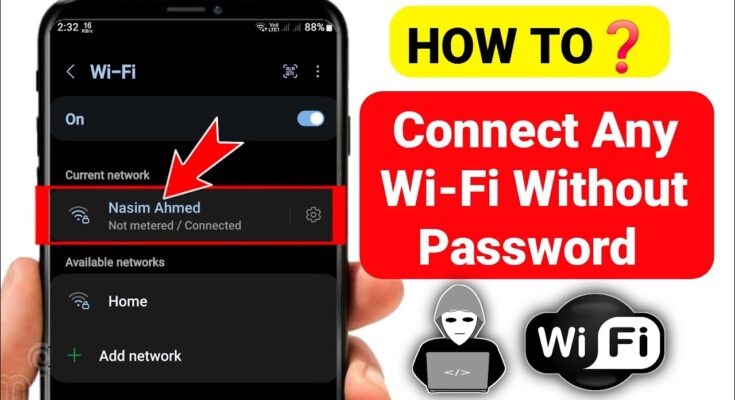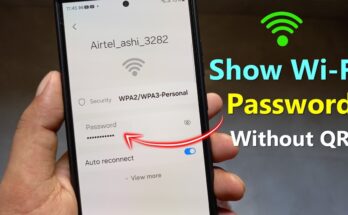Introduction to Free WiFi
Free WiFi has become an essential resource in today’s digital age, enabling individuals to stay connected without relying on expensive data plans. Public places such as coffee shops, airports, libraries, and hotels often provide free internet access to enhance customer convenience. While it offers flexibility and cost savings, using free WiFi comes with certain risks, including potential data breaches and unauthorized access to personal information.
To counteract these risks, users are encouraged to take precautionary measures such as utilizing secure networks and avoiding sensitive transactions on public WiFi. Apps like Techmigy simplify this process by identifying reliable hotspots and ensuring secure connections for its users.
Finding Free WiFi Locations
The Techmigy app simplifies the process of locating free WiFi hotspots by using advanced mapping and network filtering tools. Users can search for nearby locations offering free internet access based on parameters such as distance, speed, or user ratings. The app provides an interactive map displaying WiFi points with categorized tags for public spaces, cafes, libraries, and transportation hubs.
To refine the search, users can filter networks for secure connections by encryption type or by viewing reviews from other users. Alerts for newly added hotspots or promotions at businesses offering free WiFi can also enhance the discovery experience.
Understanding WiFi Networks: Public vs. Private
WiFi networks can generally be categorized into public and private types, each offering distinct features and usability. Public WiFi networks are typically accessible in locations like cafes, airports, or hotels. They provide internet access to anyone without requiring specific credentials. While convenient, public networks often lack robust security, making sensitive data vulnerable to threats.
Private WiFi networks, conversely, operate in controlled environments like homes or workplaces. These networks are secured with passwords and encryption protocols, ensuring better protection against unauthorized access. Users connecting to these networks must authenticate, offering a more stable and secure connection. Recognizing these differences is critical for safe internet usage.
Essential Tools for Finding Free WiFi
Accessing free WiFi requires leveraging key tools to streamline the process and ensure reliable connections. Techmigy app users can take advantage of integrated features that map out nearby hotspots with ease.
- WiFi Locator Apps: These apps, including Techmigy, scan surroundings to identify available networks and their signal strength.
- Hotspot Databases: Online directories often highlight establishments and public areas offering free WiFi access.
- Built-in Device Settings: Most smartphones and laptops allow automatic detection of open networks within range.
Connecting securely is paramount; users should employ VPN technology and firewalls to safeguard personal information from potential cyber threats during public WiFi use.
How to Connect to Free WiFi
To connect using the Techmigy app, users should follow a straightforward process.
- Download and Install the App: Begin by downloading the Techmigy app from the official app store. Ensure it is up-to-date for optimal performance.
- Enable WiFi on the Device: Open the device’s settings and turn on WiFi to allow scanning for available networks.
- Launch the Techmigy App: Open the app and grant necessary permissions, such as location access, to help it identify nearby networks.
- Search for Free WiFi: Access the app’s “Available Networks” section to view public WiFi hotspots.
- Select and Connect: Choose the desired network, and the app will guide through its secure connection process.
Maintain security by following app recommendations.
Best Practices for Using Free WiFi Safely
Free WiFi networks bring convenience but can expose users to security risks without proper precautions. It is essential to follow best practices to protect personal information and devices when connecting to public networks.
Security Tips for Free WiFi Usage
- Avoid Accessing Sensitive Accounts: Refrain from logging into banking sites or entering sensitive credentials on public WiFi networks.
- Use a VPN (Virtual Private Network): Encrypt all data exchanges by configuring a reliable VPN, ensuring privacy from potential snoopers.
- Disable Auto-Connect: Adjust device settings to prevent automatic connection to open networks, reducing risks of connecting to unsafe WiFi.
- Verify Network Legitimacy: Always confirm the correct network name with staff to avoid “evil twin” networks.
- Enable Firewalls: Activate firewall protection for your device to block unauthorized attempts to access your system.
- Keep Software Updated: Regularly update operating systems, browsers, and antivirus software to close security vulnerabilities.
- Avoid File Sharing: Disable file-sharing options and AirDrop on devices when connected to public networks.
Taking these preventive measures ensures secure and efficient use of free WiFi networks.
Enhancing Your WiFi Signal
Optimal WiFi performance relies heavily on signal strength. Improving signal strength ensures smoother connectivity while using free WiFi with the Techmigy app. To enhance your WiFi signal, users should consider router placement; centrally located routers minimize dead zones. Switching to a higher-performing frequency band, such as 5 GHz, reduces interference and boosts speed. Hardware upgrades like WiFi extenders or mesh systems are particularly effective in larger spaces.
Obstacles such as walls or metal objects can disrupt signal transmission; reducing such barriers is beneficial. Adjusting router antennas or updating firmware can further enhance connection stability. Accurate diagnosis using tools integrated within the Techmigy app maximizes efficiency across networks.
Popular Spots for Free WiFi Around the World
Free WiFi access has become increasingly common in global hotspots, offering travelers and locals alike the opportunity to stay connected without incurring additional costs. These locations often include public venues where connectivity is essential.
Common Locations Offering Free WiFi
- Cafés and Coffee Shops: Major chains such as Starbucks, Costa Coffee, and Dunkin’ provide free WiFi as part of their customer experience.
- Libraries: Public libraries globally prioritize free internet access for visitors, enabling productivity and research.
- Airports: Many international and regional airports offer complimentary WiFi in lounges and waiting areas.
- Hotels: Numerous hotels include free WiFi as part of their guest services, though availability may vary.
- Parks and Public Squares: Cities such as New York, Paris, and Tokyo have outdoor areas equipped with free public WiFi networks.
- Retail Stores: Shopping malls, tech outlets, and department stores often provide WiFi to enhance customer engagement.
These options allow global travelers easy access to the internet for navigation, communication, and more.
Troubleshooting Common WiFi Issues
When encountering WiFi connectivity problems while using the Techmigy app, several approaches can help resolve them effectively.
Common Solutions:
- Verify Signal Strength Users should check if the device is within range of a strong WiFi signal. Weak signals often result in connection drops.
- Inspect Network Settings Ensure the correct network credentials are being used. Mistyped passwords can block access.
- Restart Devices Restarting the smartphone, router, or modem often resolves temporary glitches affecting connectivity.
- Clear Cache Clearing the app cache might improve performance if issues stem from corrupted files.
- Update Software Outdated app versions or device firmware may lead to compatibility issues; regular updates resolve these concerns.
- Check ISP Status Confirm whether the Internet Service Provider (ISP) is experiencing outages in the locality.
Utilizing these strategies ensures smoother app performance and uninterrupted access to free WiFi.
Legal and Ethical Considerations
Using free WiFi networks responsibly requires understanding legal and ethical obligations. Users must respect network policies outlined by providers, ensuring their actions align with terms of service. Unauthorized access to secured or private networks without consent is illegal and may lead to criminal charges. Ethical use also involves avoiding activities such as hacking, data theft, and distributing harmful content.
When using the Techmigy app, users must ensure their usage complies with local regulations concerning cybersecurity and data privacy. Harmful interference with shared bandwidth, such as excessive downloading, should be avoided. Promoting respectful and lawful online behavior aids in maintaining a secure and trustworthy digital environment.
Securing Your Data on Public WiFi
Public WiFi networks are often vulnerable to cyber threats, making it essential to protect sensitive data while using them. The Techmigy app provides robust features to ensure secure browsing.
Steps to Enhance Security:
- Enable a VPN: By utilizing Techmigy’s built-in VPN, users can encrypt their internet traffic, preventing data interception.
- Disable File Sharing: Turn off file-sharing options on the device to reduce exposure to network-based attacks.
- Use HTTPS Websites: Ensure that all websites accessed are HTTPS-enabled for encrypted communication.
- Turn Off Automatic Connections: Disabling auto-connect features avoids unsafe connections to unknown networks.
- Update Device Software: Regularly updating apps and operating systems keeps vulnerabilities patched against threats.
By following these steps with Techmigy, users can securely navigate public WiFi networks without compromising data integrity.
Top Apps for Accessing Free WiFi
Finding reliable free WiFi is a task made easier with specialized apps designed for seamless connections. These applications allow users to locate public WiFi hotspots, gain access securely, and monitor data usage effectively. Below is a list of top-performing apps in this category:
1. WiFi Map
- Provides a global database of free WiFi hotspots.
- Offers offline access to hotspot maps and passwords.
- Includes community-driven updates from users.
2. Instabridge
- Automatically connects to shared WiFi networks.
- Features an easy-to-navigate user interface for convenience.
- Regularly updates shared passwords and connection availability.
3. OpenSignal
- Locates nearby networks with detailed signal strength maps.
- Includes advanced tools for troubleshooting connectivity issues.
4. Wiman Free WiFi
- Offers access to a vast network of public WiFi locations worldwide.
- Includes the ability to save offline maps for connectivity planning.
Leveraging these apps ensures users can effortlessly connect to free WiFi networks while traveling or during emergencies.
The Future of Free WiFi
As technology evolves, the availability and accessibility of free WiFi are expected to expand further. Public networks are increasingly being implemented in smart cities, airports, and transportation hubs to enhance connectivity for travelers and residents. The integration of 5G technology allows for faster speeds and broader coverage, significantly improving the user experience on free networks.
Emerging innovations like WiFi 6 promise greater efficiency and reliability, making public networks more secure and robust. Governments and private enterprises are also collaborating on comprehensive initiatives to bridge the digital divide, extending free internet access to rural and underserved areas.
Simultaneously, advancements in encryption and security protocols ensure that public WiFi networks remain safe for users, addressing concerns over data breaches. The role of apps like Techmigy will continue to be pivotal in helping users locate, access, and optimize these networks, driving seamless connectivity everywhere.
Conclusion and Next Steps
To maintain uninterrupted access to free WiFi using the Techmigy app, users should regularly update the application for enhanced compatibility and security features. Familiarizing oneself with WiFi hotspots in frequently visited locations can improve efficiency and connection reliability. Additionally, enabling notifications within the app ensures timely alerts about newly discovered networks and updates.
Users are encouraged to explore advanced features, such as connection optimization tools, for better performance. Safeguarding personal data by adhering to best practices for public WiFi usage is imperative. For further convenience, leveraging the app’s customer support and built-in troubleshooting tools can resolve connectivity issues seamlessly.

